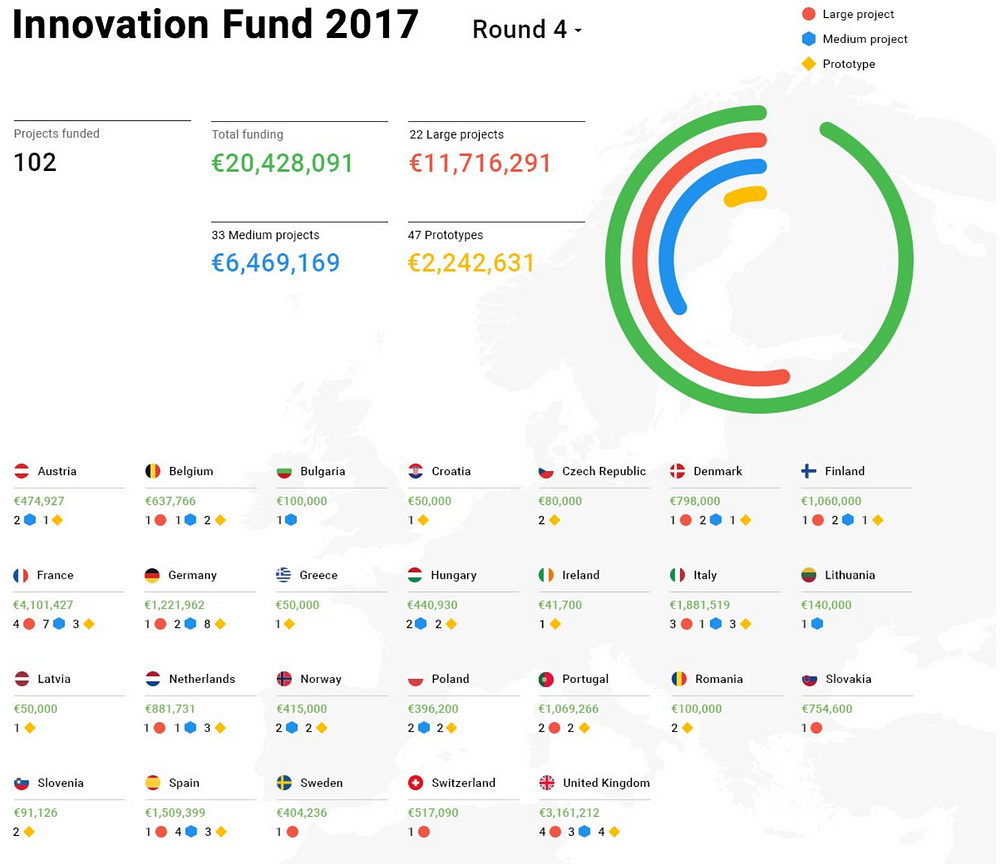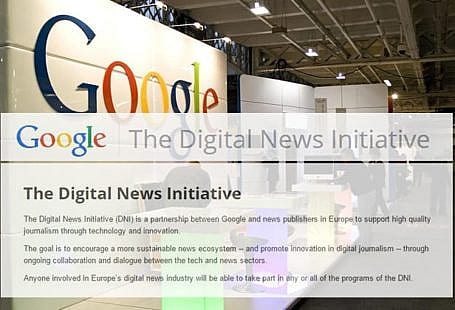We started covering Google’s DNI investments in Round 2 (How Technology Will Impact Journalism In 2017) a year ago.
We then covered Round 3 (Journalism tech trends from Google’s DNI Round 3) and announced later that our company was one of the selected projects for investment (along with Portugal’s Grupo Impresa).
And now, in December 2017, the results for Round 4 are out.
[spoiler] There are no significant shifts in investment strategy from Round 3 but let’s jump right at them.
On Round 3, we analyzed all the investments made and came up with a quick summary of the trends there. They were:
- Fact Checking: with projects developing technology towards improving journalism through fact-checking mechanisms.
- Artificial Intelligence & Machine Learning: with several projects dedicated to the use of AI in the newsroom.
- Content Experience: changes in the way we consume content
On this post, we’ll cover the main trends of Round 4 and, for something new, highlight a few of the teams and projects and captured our attention.
Google’s DNI Round 4 invested more than €20.5M in 102 projects from 29 countries, with France, the UK, and Spain leading funding volume.

Without further ado, the leading trend in Google DNI Round 4:
AI, Bots & Predictive Analytics
Dozens of projects were submitted and accepted for investment covering several aspects of the AI-powered journalism world.
These are what normally is considered narrow-AI experiences, very focused and tailored to each of the project’s’ goals.
From AIs that automatically produce content from structured data sets to others that dynamically build landing pages depending on the user who’s visiting them, the menu is full of smart technology that ultimately has the goal of improving user experience and monetization.
In this category, three projects got our attention and we’d like to give them a shout out:
- Business Journalism Robot (Denmark): a robot that can write business news stories fast, accurately and with a ‘human’ touch — getting smarter with every article with input from reporters and editors, and providing predictive suggestions to help human reporters produce better stories. The reasoning behind this is that journalists spend too much time developing stories around structured data sources (like business reports). With AI, processes can be created to automatically create these and leave journalists with time for high-value pieces (investigative for example).
- Spectral (Germany): a news article recommender system that reduces the effects of a filter bubble. Through machine learning, it adapts and learns the limits of each user’s reading preferences. The aim is to overcome inherent political bias while improving reader comprehension in a user-friendly way.
- Archivist (Germany): a data-driven system to increase user engagement with evergreen content. Publishers rarely re-share archived articles with their readers. The challenge is surfacing the right article at the right time. The Archivist aims to address this challenge by combining data on trending topics with the topics in their own archive. Overlaying user data on previous engagement will add to the relevance and usefulness of the content offered to the reader.
The second big trend (and definitely not a surprise) was:
Monetization
Here’s where things got creative. From anti-AdBlock experiences to gamification projects to using smart personalization to foster conversion and reduce churn, candidates got extremely innovative.
This topic is clearly unresolved, with many publishers finding early that their programmatic/native strategies were not what they expected, revenue-wise.
A few projects appeared very innovative in their monetization approach:
- Smart Pages (Spain): a technical system that generates customized news pages in real time. It applies business rules defined by the editor and accounts for the user’s connection context, browsing habits and preferences to provide a personalized experience that makes information more relevant, increases engagement, targets new subscriber candidates and improves advertising performance.
- Subscription Revenue (France): a project that involves a complete overhaul of the customer subscription experience for all Les Echos digital products — tailoring paywall strategies and subscription offers by means of two main levers: personalization and upgrading.
- Playwall (Denmark): a new way of paying for an editorial online product: readers provide time and knowledge, carry out mini-tasks, and earn credits which they can use to pay for ad-free access.
To close the podium, we’re highlighting the third biggest trend, also coherent with previous rounds of the DNI Fund:
Content, Distribution & Formats
With AR/VR on the rise, teams are still finding the best way to tell and distribute their stories over the myriad of devices we now use.
One of the biggest challenges of the publishing industry is exactly to understand when/how/where to tell those stories to their audiences.
Tens of projects tried to tackle this issue. These ones got to us:
- UE Content Intelligence (Spain): a data product that will help Unidad Editorial gain a deeper understanding of the content they create and how the creation of that content impacts user engagement, value creation, and monetization.
- Finspector (Slovenia): an application that offers the most comprehensive insight into public spending in Slovenia from 2003 onward. The online tool, which will be based on complete data about public spending in Slovenia, will enable crowdsourcing of investigative journalism, empowering the work of professional journalists, active citizens, and other institutions.
- Mooding (UK): a project aiming to harness a reader’s state of mind, profiling their affinity to different types and tones of content in order to personalize their experience and improve engagement.
The summary of Google’s DNI funding initiatives is made and I hope it gave you a quick glimpse of how innovation looks like in this world of ours.
Interested in knowing more about Dark Social & Analytics?
[su_button url="https://getsocial.io" target="_blank" style="flat" background="#21D2B5" color="#ffffff" size="7" wide="no" center="yes" radius="auto" icon="" icon_color="#FFFFFF" text_shadow="none" desc="" onclick="" rel="" title="" id="" class=""]SIGN UP FOR FREE[/su_button]




